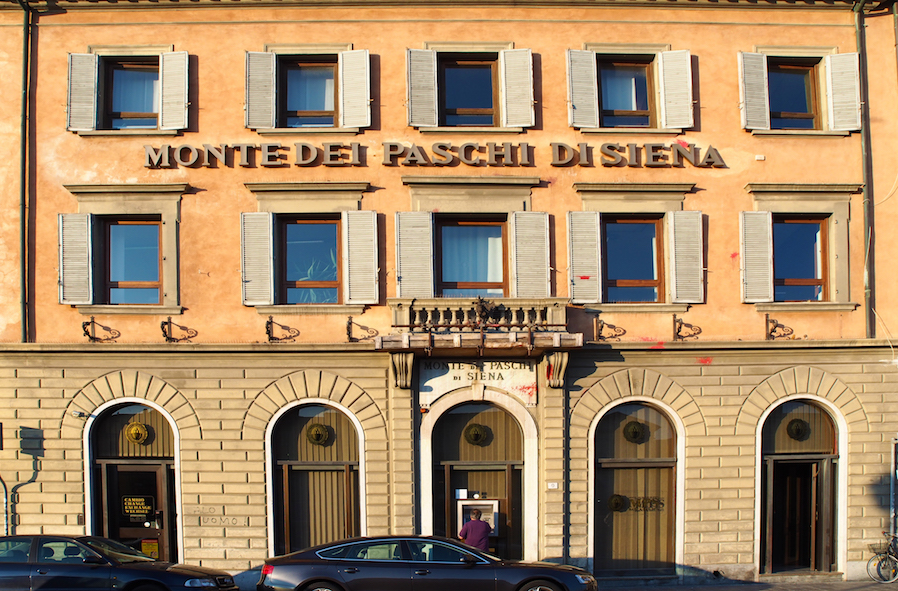If Italy or the European Union have to step in to save banks, there’s no reason for them to have to do it for free
First the bad news: Less than a decade after a giant financial crisis laid low the world economy, a Bloomberg story quotes Lorenzo Bini Smaghi, Chair of the French banking giant Société Générale, as saying that European governments need to accept the idea that taxpayers’ money may be the last recourse in halting another pan-European banking crisis.
Now the good news: We are only interested observers of the arm wrestling between the various EU countries over the costs of bank rescues, state expenditures, and such. But we do think there is a clear lesson from the long history of how governments have dealt with bank failures. And that lesson is quite different than what Bini Smaghi seems to think. He told Bloomberg that Italian Prime Minister Renzi would have to take unpopular steps to save the situation.
We take it for granted that European authorities will not dare to put the world through another Lehman debacle. So banks may indeed need another rescue from someone – perhaps a “European” solution as Bini Smaghi seems to prefer or other (country specific) devices. But, actually, if Renzi or the EU does bailouts properly, they might well rise in public esteem. Put simply, if Italy or the European Union needs to step in to save banks, there is no reason why they have to do it for free. As we outline in this essay written soon after the 2008 debacle, best practice in banking rescues is to save banks, but not bankers. That is, prevent the system from melting down with all the many years of broad economic losses that would bring, but force out those responsible and make sure the public gets paid back for rescuing the financial system.
The simplest way to do that is to have the state take equity in the banks it rescues and write down the equity of bank shareholders in proportion. This can be done in several ways – direct equity as a condition for bailout, requiring warrants that can be exercised later, etc. The key points are for the state to take over the banks, get the bad loans rapidly out of those and into a “bad bank,” and hold the junk for a decent interval so the rest of the market does not crater. When the banks come back to profitability, you can cash in the warrants and sell the stock if you don’t like state ownership. That way the public gets its money back; as we note in this essay, at times states have even made a profit. Making bankers pay is for sure a vote winner – and a massive change from recent practice in and out of the EU. If EU bailout rules get in the way of such a solution, they need to be changed, fast or, as Bini Smaghi suggests, suspended.
Bini Smaghi also wants banking in Italy and some other countries consolidated; that’s a different problem entirely. Anyone familiar with the sharp rise in banking consolidation in the US that followed the bailouts of 2008-09 might wonder how much additional encouragement would be necessary: banks that are too big to fail are likely to dominate processes of unnatural selection anyway. But that is a different problem in any case.
Our paper was originally presented at the first INET Conference held at Kings College, Cambridge in April, 2010. Its comparative analysis of how large countries dealt with the banking crisis covers only the early stages of the bailouts; in the longer run some countries moved in directions that would require somewhat different analysis.
Download Ferguson and Johnson's essay When Wolves Cry 'Wolf!'








